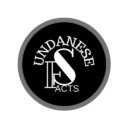Discovering the Sundanese Manuscript Siksa Kandang Karesian, Now a Recognized World Heritage
A Manuscript That Receives UNESCO Recognition
Recently, Manuscript Siksa Kandang Karesian gained global recognition. According to the official website of the National Library of Indonesia, the UNESCO Executive Board has included the manuscript, along with the works of Hamzah Fansuri, in its 74 nominations for the Memory of the World (MoW) Register for the 2024–2025 cycle. These entries were chosen by UNESCO’s International Advisory Committee from 122 submissions worldwide.
The National Library of Indonesia nominated Siksa Kandang Karesian, which is preserved under registration number L 630. In parallel, Indonesia and Malaysia jointly nominated the works of Hamzah Fansuri.

“The elephants created this jungle,” says a narration in The Jungle Book, just as Bagheera the panther urges Mowgli to show respect to a herd of elephants. These majestic animals, regarded as the soul of the forest, symbolize deep understanding and ancient wisdom.
Interestingly, this concept finds a powerful echo in the ancient Sundanese manuscript Sanghyang Siksa Kandang Karesian, composed in 1518. The manuscript contains a striking phrase:
“Gajendra carita banem” – To understand the forest, ask the elephant.
While the advice is metaphorical, it emphasizes the value of seeking insight from the wise—those who possess a deep, encompassing knowledge, much like the elephant’s relationship with its environment.
What is Manuscript Siksa Kandang Karesian?
The title Sanghyang Siksa Kandang Karesian roughly translates to “Sacred Teachings for the Society of the Resis (sages).” It is a didactic manuscript that delivers guidance (pitutur) across all aspects of life—covering moral values, personal conduct, and spiritual development. It addresses all layers of society: from fathers and mothers to children and leaders.
Importantly, the manuscript is structured as a compilation of teachings for those seeking to live ethically and wisely, aligning with the Sundanese tradition of moral instruction.
The Philosophy of Tri Tangtu
The manuscript reflects the Tri Tangtu concept—an ancient Sundanese philosophy that divides social roles into three pillars:
Rama (the elder or family figure),
Ratu (the ruler), and
Resi (the spiritual guide).
These roles balance each other, promoting harmony in society. Siksa Kandang Karesian, written from the perspective of the Resi, outlines the responsibilities and virtues required to lead a spiritually upright life.
for more information read also at wikipedia
A Cultural Treasure with Global Relevance
Moreover, the National Library of Indonesia highlights that Siksa Kandang Karesian carries universal moral values, particularly those related to honesty, responsibility, and spiritual integrity. The manuscript not only captures the cultural and religious worldview of the Sundanese people in the 16th century, but it also illustrates their interactions with other ethnic and political groups—revealing a vibrant socio-economic context.
Critically, only two known copies of the manuscript exist today, making it an irreplaceable historical artifact.
The Two Surviving Manuscripts
Here are the two documented versions:
L 630 – This version, written on lontar (palm) leaves, was discovered by renowned Indonesian painter Raden Saleh during his travels in the Priangan region. It dates to the Saka calendar year 0-4-4-1 or 1518 AD.
L 624 – Housed in Cabinet 69, this version was a donation from Wiranatakusumah IV, the regent of Bandung (1846–1874), to the Royal Batavian Society of Arts and Sciences, based in Batavia (now Jakarta).
Both copies are preserved at the National Library of Indonesia and serve as vital references for researchers and cultural historians.
A Poetic Work Full of Symbolic Wisdom
One reason Siksa Kandang Karesian remains timeless is its rich, poetic language. It employs metaphors rooted in nature, each offering a lens through which to understand life.
A well-known verse reads:
Tadaga carita angsa
Gajendra carita banem
Matsyanem carita sagarem
Puspanem carita bangbarem
(To know about the lake, ask the swan.
To know about the forest, ask the elephant.
To know about the sea, ask the fish.
To know about flowers, ask the bee.)
Each line encourages readers to seek knowledge from those most intimately connected with the subject—a call for wisdom, humility, and respect for experience.
Insights into Traditional Tools and Weapons
In addition to philosophical teachings, the manuscript also offers descriptions of traditional tools and weapons. Notably, it clarifies the distinction between two often-confused items: the kujang and the golok.
The kujang, often considered a sacred object today, originally served as a practical agricultural tool used by Sundanese farmers.
Conversely, the golok, now a common farming instrument, was once a weapon reserved for royalty and warriors.
A passage from the 1992 Ministry of Education and Culture translation explains:
“The king’s weapons are swords, abet, pamuk, golok, knives, tondot, kris—all sacred for warfare. The farmer’s tools are kujang, axes, hatchets, weeding tools, and sap collectors—sacred for producing food and drink.”
This comparison reflects the manuscript’s broader theme: that every role in society—whether royal or common—has sacred significance when performed with purpose and virtue.
Conclusion: A Timeless Beacon of Wisdom
Siksa Kandang Karesian is more than just a literary artifact; it is a window into the moral, spiritual, and social landscape of ancient Sunda. Through its teachings, the manuscript provides timeless guidance on how to live wisely, govern justly, and uphold integrity.
UNESCO’s recognition of this work is not only a celebration of Sundanese heritage—it is a global acknowledgment of the values that transcend cultures and eras. As we revisit such ancient wisdom, we are reminded of the enduring relevance of moral clarity, harmonious living, and the pursuit of knowledge.
Read More:
Lost Kingdom of West Java: The Untold Secrets of Pajajaran Kingdom Rise and Mysterious Fall!







